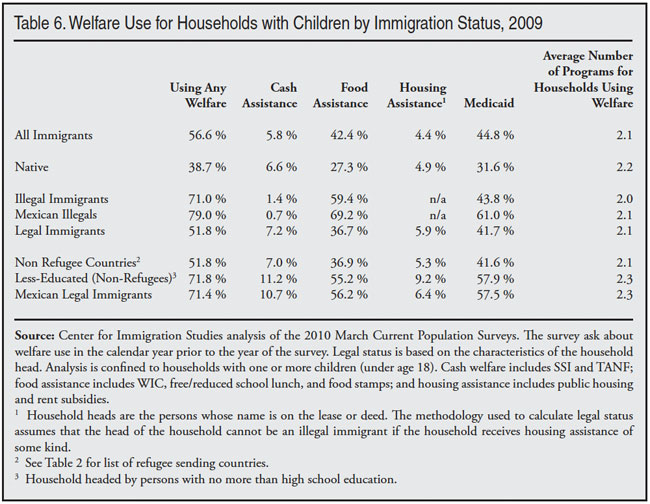Real wages have been declining since 1969. You can increase the population to grow the economy, but the only problem is that the slice of the pie gets smaller.
They also think we need an ever increasing number of tax payers to support Social Security and Medicare.
Pure sophistry. Both are pay as you go programs where today's workers pay for today's retirees. SS has been running in the red since 2010 and Medicare since 2008. Adding more immigrants to the system will hurt these programs, not help them. They are unsustainable as currently structured. The average Medicare recipient gets three time more than they they paid into the system.

Immigrants use our welfare system to a much greater extent than the native born. Bringing in more immigrants will increase welfare costs, which are already bankrupting us.

In 1950 there were 16 workers for every retiree; today it are 3 workers for every retiree; and by 2030 it will two to one. Immigrants grow old and retire as well.
While immigrants often arrive young and have somewhat larger families than natives do, the differences are not large enough to fundamentally alter the nation’s age structure. For example, the average age of an immigrant in 2012 was 43 years, while the average age of a native was 37. Also, in 2011 the Total Fertility Rate (TFR) in the United States without immigrants would have been 1.9 children per woman. With immigrants, it was 2.0 — an increase of one-tenth of a point. Thus, our fertility would be higher than almost all developed countries (and many developing ones) even without any immigrants at all.
In a highly technical but seminal article in Demography in 1992, the leading academic journal in the field, economist Carl Schmertmann explored the impact of immigrants on population aging: “Constant inflows of immigrants, even at relatively young ages, do not necessarily rejuvenate low-fertility populations. In fact, immigration may even contribute to population aging.” As the Census Bureau concluded in 2000, in the long run, immigration is a “highly inefficient” means for increasing the percentage of the population that is of working age.
The newest Census Bureau population projections, released in May of last year, show the same thing. The “high-immigration” projections show that if net immigration totals 67 million by 2060, 57 percent of the U.S. population will be of working age (18 to 64). The “low-immigration” projection (33 million fewer) show 56 percent will be of working age in 2060. Roughly doubling immigration changes the working-age share by about 1 percentage point.
Equally important, the big problem over the past decade and more has not been a shortage of working-age people, but rather that so many people who are of working age do not work. This decline in work began before the recent recession; the share of native-born, working-age Americans holding a job was lower at the economic peak in 2007 than it was at the prior peak in 2000. It deteriorated even more dramatically after 2007, of course, and has barely improved since. As a result, today there are 17 million more working-age natives who are not working than there were in 2000.
Getting several million of these people back into jobs would have a much larger impact on improving the worker-to-nonworker ratio than any likely increase in legal immigration. Immigrants arrive at all ages, and, as with any human population, some work and some do not. By definition, moving working-age natives into jobs shifts the ratio of workers to non-workers more dramatically.